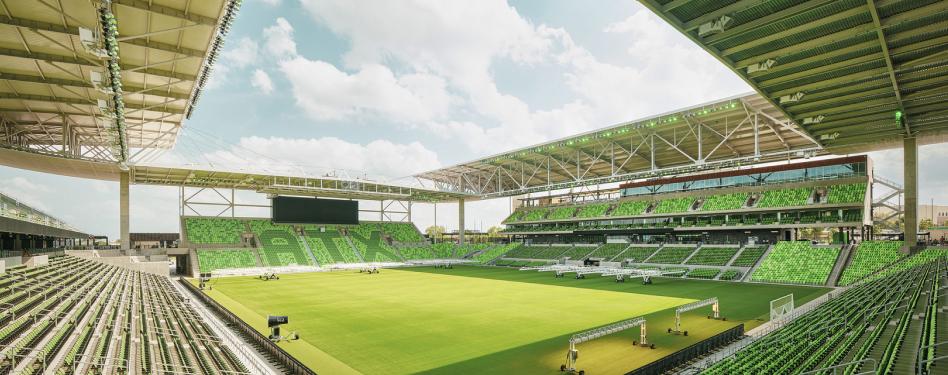
Feature image photo credit: Ryan Gobuty/Gensler.
This article was published in full on USGBC+ on June 18, 2025, as "Scoring goals with zero waste: First soccer stadium certifies with TRUE." Read the full article.
Sports arenas and other large entertainment venues have significant environmental impacts, including the amount of trash they generate. According to a 2014 paper that bases its findings on EPA data, U.S. sports fans produce 19,500 tons of waste a year, consisting mostly of food and beverage containers.
It’s not surprising, then, to learn that between seven and eight tons of trash are generated by the more than 20,000 fans at Q2 Stadium in Austin, Texas, during each Major League Soccer game. But it may come as a surprise that, thanks to the stadium’s participation in the Total Resource Use and Efficiency (TRUE) program for zero waste certification, at least 90% of that waste is recycled or composted, and kept out of landfills, incineration (including waste-to-energy) and the environment.
“We wanted to really cement our commitment to zero waste, for people to know that we’re [as] legit as possible and at the forefront of our industry for sustainability,” says Nick Otte, vice president of stadium operations at Q2 Stadium, which is the first soccer-specific stadium to receive TRUE certification.
It’s worth noting that even before pursuing TRUE, Q2 Stadium had taken steps to reuse, compost and recycle, which allowed the team to divert about 70% of waste from landfill. The stadium had already switched over to compostable tableware in 2021, and a year later began allowing attendees to bring in their own reusable water bottles, rather than compelling them to purchase pricey bottled water. But there was quite a bit more that could be done.
